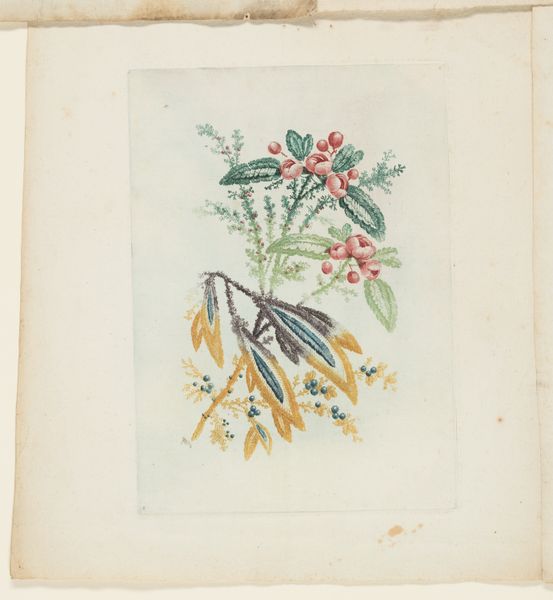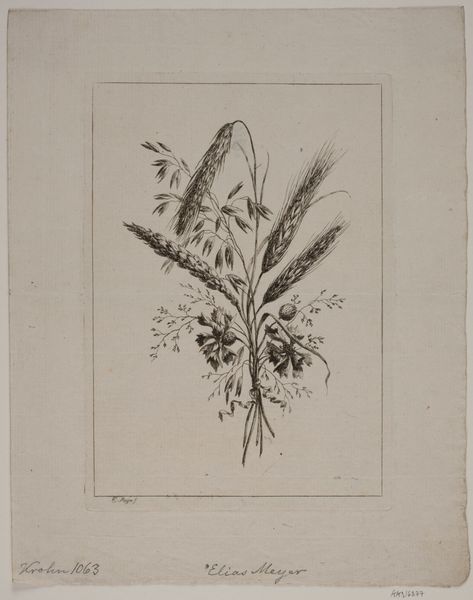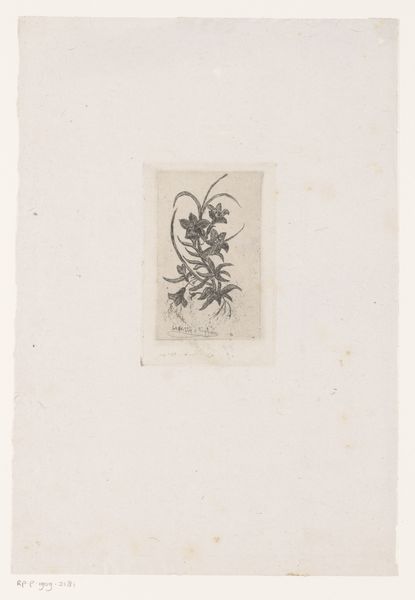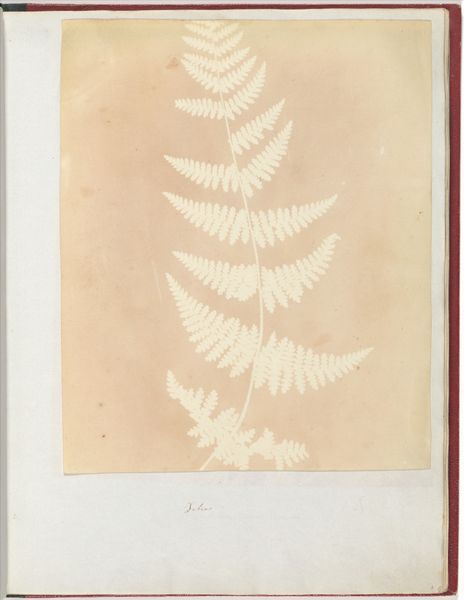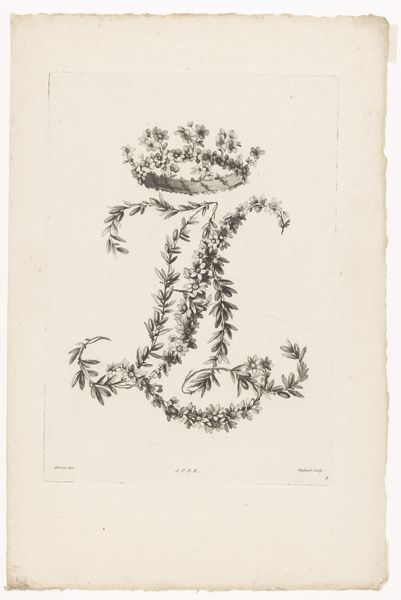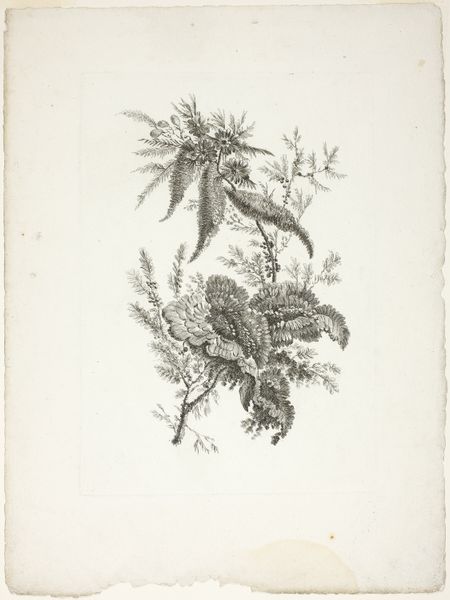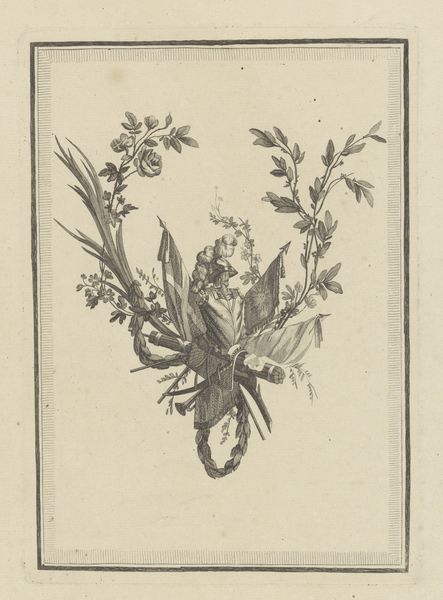
Plate, from New Suite of Notebooks of Ideal Flowers for Use by Draftsmen and Painters c. 1795
0:00
0:00
drawing, coloured-pencil, print, etching, watercolor
#
drawing
#
coloured-pencil
#
water colours
# print
#
etching
#
watercolor
#
coloured pencil
#
romanticism
#
line
#
botanical art
#
miniature
#
watercolor
Dimensions: 195 × 140 mm (plate); 270 × 242 mm (sheet)
Copyright: Public Domain
Curator: This delicate print is titled "Plate, from New Suite of Notebooks of Ideal Flowers for Use by Draftsmen and Painters," dating from around 1795. Editor: My immediate impression is one of restrained elegance. The composition is symmetrical, but the muted colours evoke a sense of quiet observation rather than exuberant display. It almost feels like looking into a naturalist's personal journal. Curator: Precisely. This work exemplifies the confluence of scientific documentation and aesthetic ideals during the late 18th century. Note the meticulous rendering of each leaf and petal. There's an emphasis on line and precise detail, reflecting the desire to codify and classify the natural world through visual means. The colour scheme, though subdued, carefully distinguishes textures through gradations of colour pencil, etching, and watercolor. Editor: But that desire for classification can also be seen as a form of control, right? The arrangement feels almost like a dissection—taking the flowers out of their natural context and presenting them as specimens for study, divorced from the messy, complicated ecosystems they are part of. Were the "draftsmen and painters" expected to adhere to very particular norms or biases? Curator: Undoubtedly. The 'ideal' in the title hints at an attempt to impose order and beauty onto the natural world. It’s crucial to appreciate the structural balance, which is a strong characteristic of Romanticism and reflects prevailing aesthetic values in botanical art in Europe at the time. Each element exists in calculated relation to one another within the defined field. Editor: And that framing then—confining this idealized nature, right? Even the colours speak of constraint. It's a reminder that even scientific and artistic endeavours are shaped by historical biases, impacting which plants were deemed worthy of depiction and how that portrayal reinforces colonial perspectives on nature. Curator: I see your point. Though it certainly has merit as botanical illustration, this framework emphasizes an elevated vision in line with romanticism's focus on conveying deep, intense, and subjective emotions rather than scientific rigor. Editor: Perhaps this illustrates not just ideal flowers, but also ideals—social and political—that need continual interrogation. Curator: Well, thank you, Anne, that truly brings forth the dual purpose here, scientific recording mixed with romantic influence. Editor: It really has helped see through both of the different meanings, formal composition with its underlaying context of coloniality, and to discover the many historical views it reflects!
Comments
No comments
Be the first to comment and join the conversation on the ultimate creative platform.
